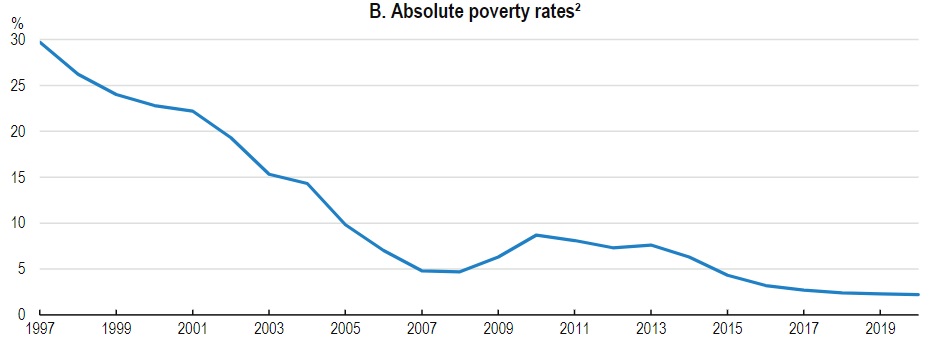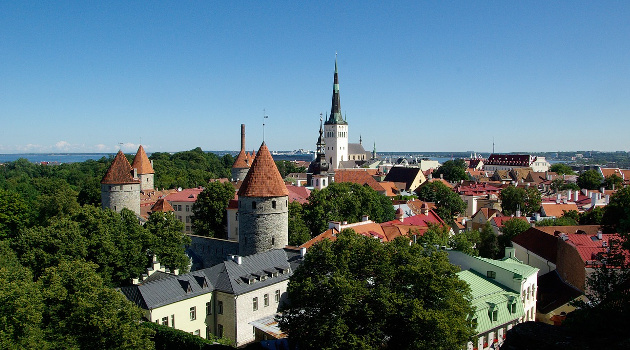I’ve written many times that convergence (or lack thereof) is the way to assess a nation’s economic policy.
Based on this metric, Estonia deserves praise. Here’s a chart from a recent OECD report, which shows Estonia (and other countries to emerge from the wreckage of communism) converging with the world’s rich nations.

Why is per-capita output converging? What has made Estonia an “improbable success“?
Part of the answer surely must be that Estonia (like other Baltic nations) has reasonably good public policy.
According to the latest edition of Economic Freedom of the World, Estonia ranks #13 (out of 165 nations).
Some of my friends on the left will grudgingly admit that capitalism leads to higher per-capita output, but they always fret that it is only because the rich get richer.
But here’s a chart from the OECD report showing that poverty has been dramatically reduced ever since Estonia made the shift from socialism to free enterprise.

To understand more about the country’s achievements, here are some excerpts from a column by Luis Pablo de la Horra for the Foundation for Economic Education.
…in recent decades we have seen that the right policies can significantly speed up economic development. Estonia is a paradigmatic example of this. …On Aug. 20, 1991, Estonia gained its independence after 51 years under the yoke of communism. …From day one, the new government committed to undertaking market-oriented reforms that laid the foundations for a successful transition from socialism to capitalism. The political agenda included monetary reform, the creation of a free-trade zone, a balanced budget, the privatization of state-owned companies, and the introduction of a flat-rate income tax. …When compared to the other former Soviet Republics, Estonia’s progress is even more astonishing. In terms of PPP-adjusted income, Estonia ranks first ahead of countries such as Russia… Estonia is the living example that human progress is closely linked to economic freedom.
Since I’m a fiscal policy wonk, I’m especially impressed by Estonia’s flat tax, as well as the fact that there is no double taxation on corporate income.
Here’s a chart from the OECD report showing that Estonia is tied for having the best system (as defined by the lowest tax burden).

As an aside, the tax burden on corporate income in the United States is higher than the average. That’s not good. But what’s really bad is that we would be the worst in the world if Biden’s tax plan gets enacted.
But I’m digressing. Let’s put the focus back on Estonia, because I want to close on a worrisome note.
To be blunt, the burden of government spending already is excessive in the country. And it is going to get worse because Estonia faces a demographic crisis (like other Baltic nations specifically and Eastern European countries generally).
Will Estonia undertake the entitlement reforms needed to preemptively address this looming problem? I’m not overly optimistic, particularly since the OECD is pushing in the wrong direction (which will be the topic of a follow-up column).
P.S. One of Paul Krugman’s more infamous mistakes occurred when he implied that Estonia’s 2008 recession was caused by spending cuts (real ones!) that took place in 2009.
———
Image credit: NakNakNak | Pixabay License.


